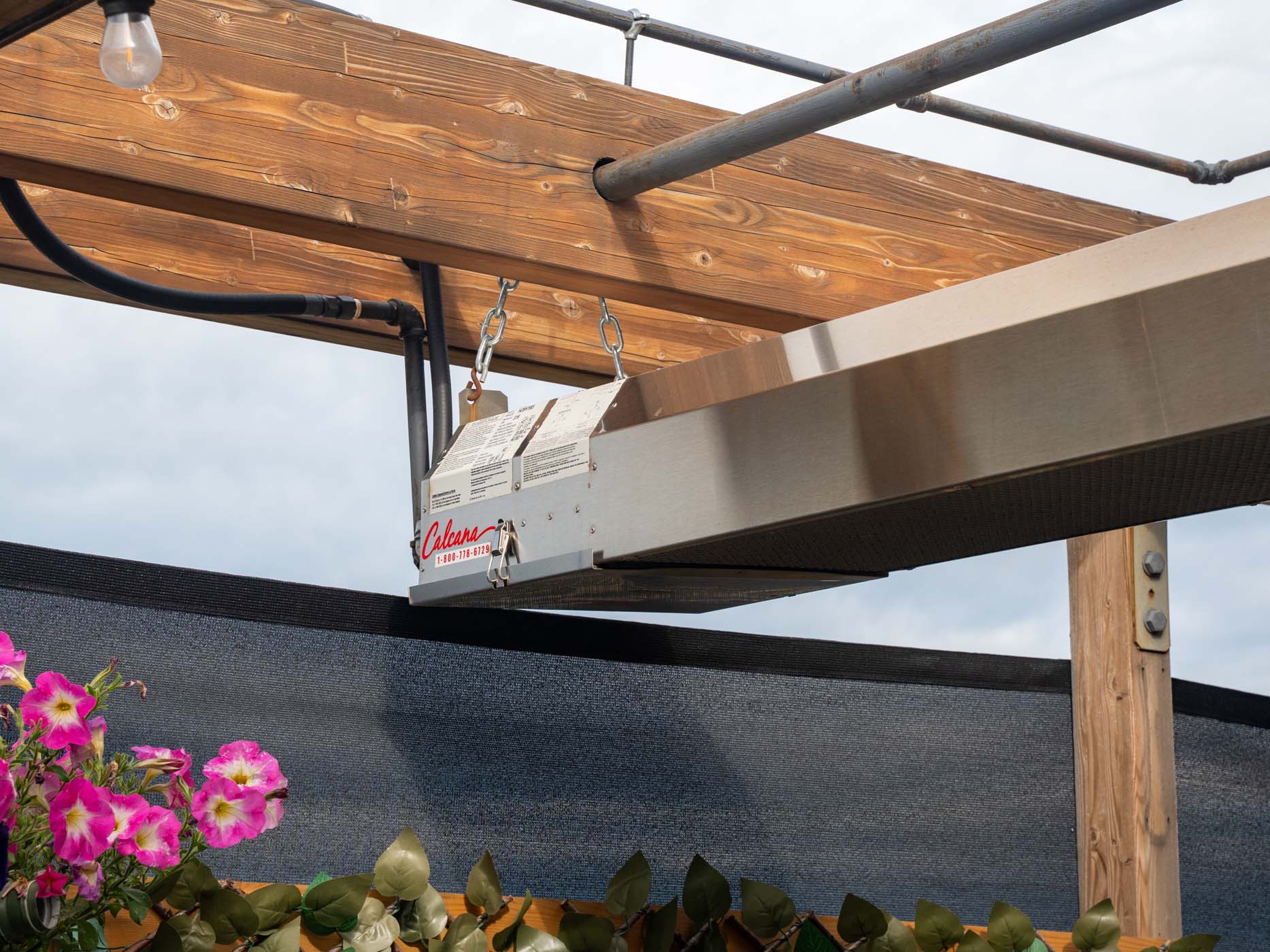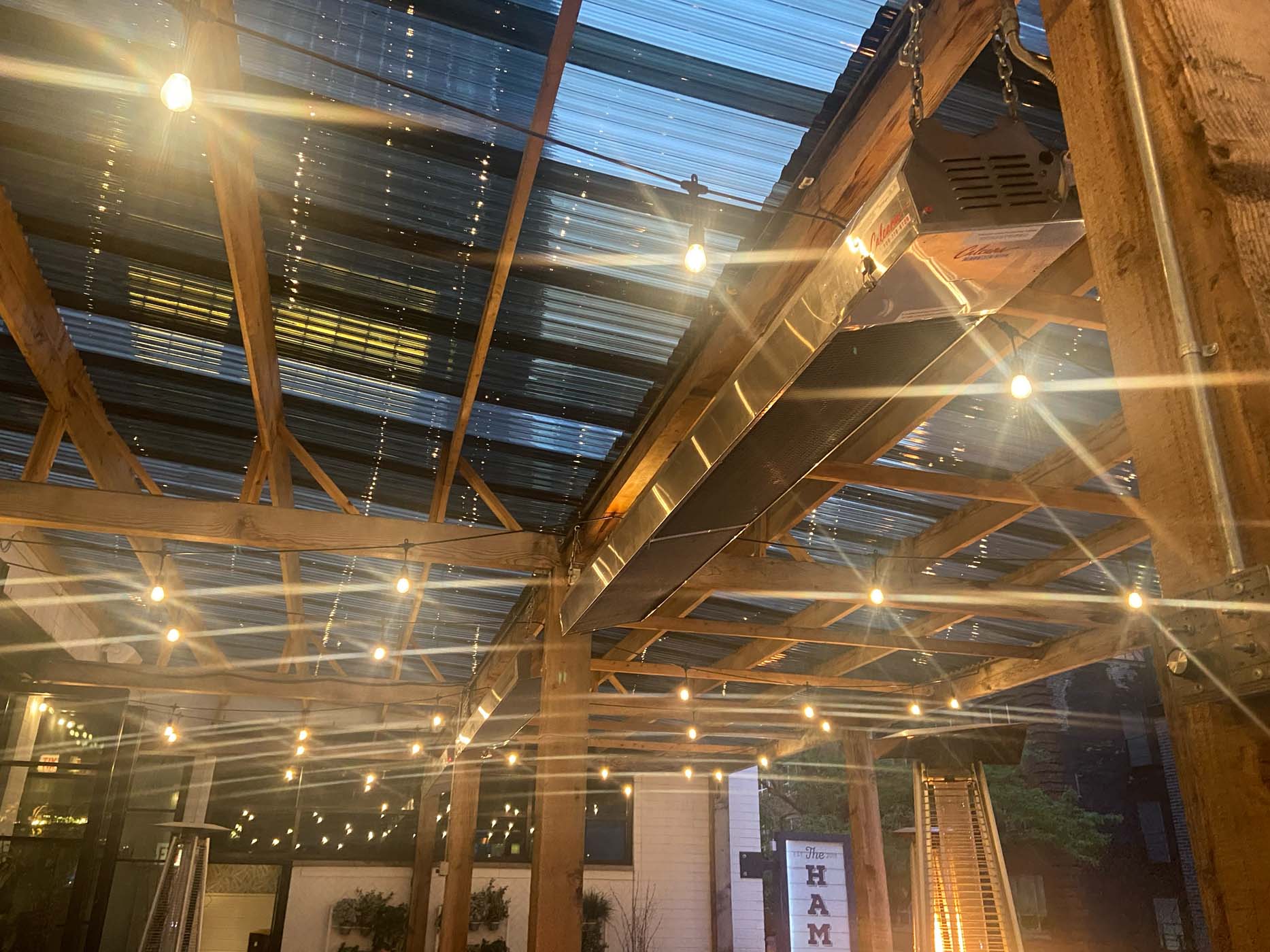When you’re planning a heating system for a patio, garage, warehouse, or arena, one of the first and most important questions is, “How many heaters will it take to do the job properly?” The answer isn’t just about square footage, it’s about understanding how people actually use the space, what kind of comfort they expect, and how environmental conditions (wind, insulation, ceiling height) affect heat retention. Getting it right from the beginning can be the difference between a space that’s always inviting and one that feels uneven or costly to run.
For restaurants and event venues, proper sizing can extend the profitable outdoor season by months. For industrial spaces, it means fewer cold complaints from staff, less energy waste, and a more productive environment. In this guide we’ll walk through not just the math but also the practical thinking that goes into determining heater quantities, so you can plan with confidence.
Why Correct Heater Sizing Matters for Comfort, Efficiency, & Cost Savings
Sizing isn’t just a technical exercise; it’s a business decision. The wrong number or wrong size of heaters can lead to:
-
Uneven comfort zones where some guests or employees are comfortable while others are cold.
-
Higher utility bills because heaters run harder than necessary or have to be supplemented with temporary solutions.
-
Shortened equipment life due to excessive cycling or overloading.
-
Lost revenue or productivity when customers cut visits short or staff performance drops in uncomfortable conditions.
Conversely, correctly sizing heaters from the start gives you predictable comfort and predictable costs. Because infrared heat works by warming people and objects directly, it’s even more sensitive to placement and output. One well-placed, modulating Calcana unit can sometimes do the job of two fixed-output units from another brand, but only if you’ve done the sizing and layout right.
Understanding Heat Load Basics
Traditional forced-air heating design begins with a “heat-load” calculation based on building volume, insulation, and temperature rise. That same thinking still matters for infrared systems, but the numbers work a little differently. Here’s why:
-
Square footage and volume still count — a 4,000 sq. ft. space with a 10-ft ceiling needs less energy than a 4,000 sq. ft. space with a 25-ft ceiling because there’s less volume to radiate across.
-
Surface types matter — concrete floors, open doors, and steel equipment all absorb and re-radiate heat differently.
-
Air movement changes perception — infrared can still warm people in a drafty environment, but wind may carry heat away from objects quickly, requiring closer spacing of units.
-
Desired comfort level varies by use — a garage used for storage might only need to stay above freezing, while a patio full of diners needs a cozy, steady warmth.
Rather than applying a one-size-fits-all BTU formula, we look at each zone’s function and layout. This is where Calcana’s free design and drawing service helps take the guesswork out.
Infrared Heat vs. Conventional Air Heating
Infrared heaters work differently from forced-air systems. Instead of heating the air, they emit radiant energy that warms people, floors, and objects directly. This has major implications for sizing:
-
Less loss from drafts — wind may move the air but radiant energy still reaches surfaces.
-
Quicker perceived warmth — guests feel heat immediately when within the coverage zone.
-
Lower fuel consumption — you don’t have to heat the entire air volume.
Because of these characteristics, infrared heaters often require fewer BTUs overall than a comparable forced-air system to achieve the same comfort level.
Step-by-Step Guide to Determining Heater Quantity
Step 1: Measure the Space
Get accurate length, width, and, if indoors, ceiling height. Draw a quick sketch.
Step 2: Identify Use Patterns
Is it an open-air patio where guests sit in clusters? A warehouse aisle with moving forklifts? A garage where workers stand at benches? This determines how heat should be distributed.
Step 3: Establish Desired Comfort Level
Outdoor patios in winter may only need a 10–15°F perceived boost, while an indoor facility might need a 30°F rise to stay at 65°F.
Step 4: Choose the Right Model
Each Calcana heater model has a published coverage area based on mounting height. For example, a PH Series patio heater might cover 10–12 feet out from each side, while an SR Series industrial unit covers larger swaths at higher mounting heights.
Step 5: Lay Out Zones
Divide your sketch into rectangles representing each heater’s coverage footprint. Make sure the footprints overlap slightly to avoid cold gaps.
Step 6: Account for Wind and Air Movement
On exposed patios or loading docks, you may need closer spacing or higher output per unit.
Step 7: Check Clearance & Mounting Options
Calcana heaters feature some of the lowest clearances in the industry, allowing you to install units where competitors can’t. This can reduce the total number needed because you can place heaters in optimal spots rather than being forced into awkward layouts.
Indoor Applications: Warehouses, Garages, Churches, & More
Warehouses
High ceilings, frequent door openings, and large volumes make warehouses notoriously hard to heat. Infrared heaters mounted overhead create a comfortable zone at floor level without wasting energy heating the entire air mass. Proper spacing along aisles ensures even coverage.
Garages & Workshops
For garages that double as workshops, modulating Calcana units let you dial down output for steady comfort, saving fuel compared to fan-forced heaters. Often one properly placed unit is enough for a standard two-bay garage.
Churches, Gyms, & Auditoriums
Spaces with intermittent use benefit from infrared because it provides near-instant warmth when occupied. Strategic placement over pews or seating areas can reduce the total number of units required compared to central air systems.
Outdoor Applications: Patios, Stadiums, & Open-Air Venues
Restaurant Patios
For a typical rectangular patio, start by identifying seating zones. Each Calcana patio heater covers a specific width depending on mounting height; multiple units create overlapping “comfort zones.” Because Calcana heaters are designed for Canadian winters, they perform even in cold, windy conditions.
Stadiums & Grandstands
Large spectator areas require a grid of high-output units mounted overhead or behind seating. Infrared is ideal because it targets people directly rather than wasting energy on open air.
Open-Air Venues & Event Tents
Portable or fixed infrared units can create warm zones for VIP areas, registration booths, or outdoor bars. Our heaters’ stainless steel, weatherproof construction ensures long service life even with frequent setup and teardown.
Sizing Infrared Heaters for Large Spaces
Once you know the dimensions and use patterns, the next step is to translate that into heater count and placement. Each Calcana model has a published coverage area depending on mounting height and output. The process generally looks like this:
-
Sketch the floor plan and mark activity zones, tables, assembly lines, bleachers, loading docks.
-
Overlay heater coverage footprints — think of each heater as casting a “cone” of radiant energy. Overlap slightly to avoid cold stripes.
-
Adjust for mounting height — higher mounting spreads heat wider but reduces intensity; lower mounting creates a warmer “punch” in a smaller area.
-
Consider modulation — Calcana’s patented modulating design gives you variable output in one unit, reducing the total number of models you may need and making the system more adaptable season to season.
-
Check clearances — Calcana’s industry-leading low clearances let you install units where others can’t, again reducing total count or making coverage more even.
This method not only ensures you have the right number of heaters but also puts them where they’ll be most effective, often saving on both equipment and operating costs.
Maintenance Needs of Infrared Heaters
The number of heaters you install also influences maintenance schedules. Fortunately, Calcana units are engineered for longevity with:
-
Marine-grade stainless steel housings for corrosion resistance.
-
Fully enclosed flame design (in gas models) to protect components.
-
CSA and CE certifications for safety and compliance.
Routine maintenance usually involves periodic cleaning and inspection rather than major part replacements. This low maintenance requirement makes it easier to justify multiple units across a large facility.
Cost Savings & ROI
Properly sizing heaters delivers a strong return on investment:
-
Fuel savings — fewer, correctly placed units running at optimal modulation consume less gas.
-
Lower install costs — less pipework and wiring compared to an oversized system.
-
Increased revenue — for businesses, extended patio season means more covers served and higher sales.
Calcana’s combination of high efficiency and competitive pricing compared to premium brands like Bromic or Schwank makes the ROI even more compelling.
Choosing the Best Infrared Heater for a Large Room
When selecting a heater model, consider:
-
Type of space (indoor vs. outdoor).
-
Mounting height and clearance restrictions.
-
Desired control options (on/off vs. modulating).
-
Aesthetics (visible to guests or hidden above).
Calcana offers SR Series for industrial settings and PH Series for patios and hospitality, with plans to expand into electric options soon. Whatever the application, our experts can provide free layout drawings to help you determine exactly how many units you need.
Final Thoughts
Determining how many heaters you need doesn’t have to be complicated. By understanding your space, usage patterns, and desired comfort level, and by leveraging Calcana’s expertise, low-clearance designs, and modulating technology, you can create an efficient, cost-effective heating plan for any size area.
Whether you’re outfitting a small garage or a sprawling arena, the right number of properly placed infrared heaters will deliver superior comfort, lower operating costs, and a longer outdoor or operational season.
Need help planning your heating layout? Contact Calcana today, and our team will be happy to provide personalized guidance and even suggested drawings for your project.




Leave a comment
This site is protected by hCaptcha and the hCaptcha Privacy Policy and Terms of Service apply.